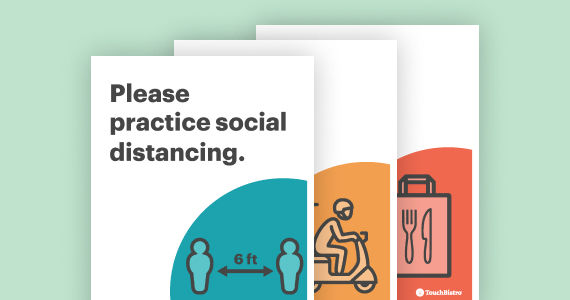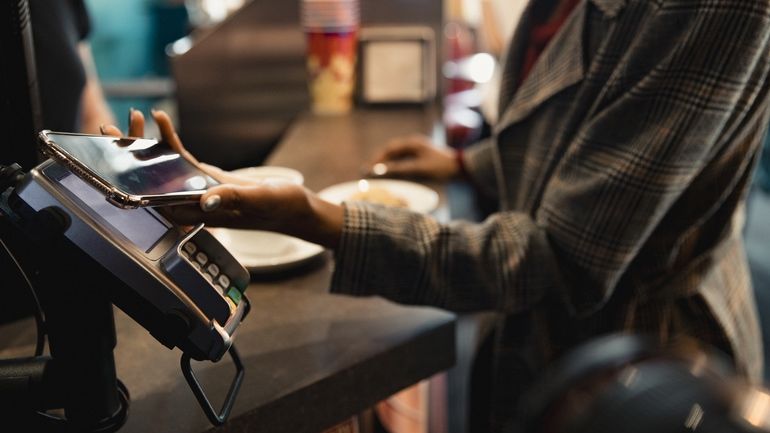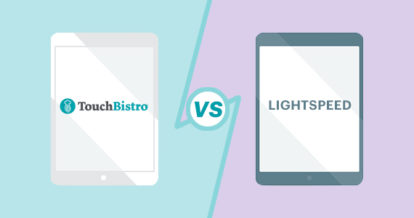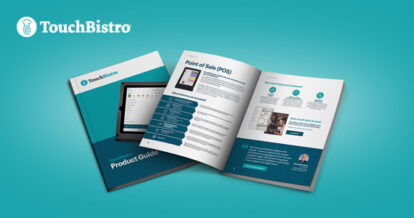From stuffed animals in seats to pool noodles you wear on your head, restaurants have been going the extra mile to promote social distancing during the COVID-19 pandemic.
But while the idea of a mannequin joining you in a restaurant booth makes for a hilarious story, it’s important to remember that these creative distancing measures are part of a much bigger conversation about how restaurants are keeping their staff and customers safe during the pandemic. Even with many cities and states reopening, issues such as capacity limits and restrictions on indoor dining leave restaurateurs with the tricky task of keeping people apart and creating a contactless dining experience in the very spaces created to bring people together.
Beyond simply stuffing mannequins in empty chairs, many restaurateurs are thinking about the practical steps they can take, while still delivering a great customer experience. Fortunately, there are many ways to promote social distancing in your restaurant that don’t involve dressing up mannequins or fashioning your own pool noodle hats.
In this article, we’ll dive into the topic of social distancing, including:
- The importance of social distancing in restaurants
- Nine ways to promote social distancing in your restaurant
- Free, downloadable social distancing signs for your own restaurant

Remind staff and customers to keep their distance with our free social distancing signs for restaurants.
The Importance of Social Distancing in Restaurants
As the COVID-19 pandemic has worn on, public health organizations like the Centers for Disease Control and Prevention (CDC) have released new guidelines for how to prevent the risk of spreading COVID-19 in venues such as bars and restaurants. Whether dining takes place outside or indoors, the CDC notes that keeping diners spaced at least six feet apart (socially distanced) is crucial to lowering the risk of COVID-19 infections. This is because COVID-19 is primarily spread among people who are in close contact (within about six feet) for a prolonged period of time.
For restaurants, the most obvious benefit of promoting social distancing is keeping guests and staff safe. When practiced in combination with other preventive actions such as frequent hand washing and wearing masks, social distancing can help to reduce the possibility that the coronavirus will spread within a restaurant.
However, there is also another major benefit of promoting social distancing in your restaurant.
Taking action to keep staff and diners apart demonstrates that you are taking the health crisis seriously and that you’re making safety a top priority. This can be an important part of building trust among customers who may still be nervous about dining out after mass restaurant closures.
In fact, one study of 2,500 Canadian and American adults found that if social distancing were reduced to just one meter (about three feet), only 40% of respondents said they would be comfortable dining in restaurants. In other words, proper social distancing is key to getting diners back in dining rooms.

9 Ways to Promote Social Distancing
It’s clear that social distancing is essential to reopening your restaurant in the midst of the pandemic.
But how exactly do you promote social distancing in a busy space like a restaurant?
Below, we’ll go over some of the practical ways you can promote social distancing in your restaurant. From high-tech solutions to old school tactics, there are many different steps you can take to create a successful social distancing policy in your restaurant.
1. Social Distancing Signs
While it may feel like social distancing is now the default, it’s important to remember that just a few months ago “social distancing” wasn’t even part of our vocabulary. In other words, social distancing is still new and sometimes people just need a quick reminder to keep their distance.
Clear and visible social distancing signs can serve as a simple reminder for customers (and staff) to stay six feet apart at all times. These signs are easy to make on your own, or you can download and print TouchBistro’s free social distancing signs. Place these signs throughout your restaurant and in any place where customers may gather (like outside your front entrance) to reinforce the message.
2. Directional Arrows
One of the biggest challenges of promoting social distancing in a restaurant is that there’s a constant flow of people coming and going. Even if your restaurant is operating at a reduced capacity, customers and staff are bound to run into one another during service.
The simplest way to prevent guests and staff from accidentally bumping into one another is to direct the flow of traffic with directional arrows. Place one-way directional arrows throughout your restaurant to keep everyone moving in the same direction. This can be particularly helpful in directing guests in and out of your restaurant if you have separate doors for your entrance and exit.
3. Remove Self-Service Stations
Another challenge when it comes to promoting social distancing in restaurants is keeping customers from congregating in certain areas. For example, self-service areas such as buffets, salad bars, condiment stations, and soda fountains can easily become crowded and make social distancing impossible.
The easiest solution to prevent overcrowding is to remove any kind of self-service station. For instance, instead of condiment bars, you can bring guests individual containers of condiments upon request. This is exactly what major QSR chains like Burger King, Tim Hortons, and Popeyes have done in order to promote social distancing.
If table service doesn’t make sense for your restaurant, you can follow the lead of McDonald’s and have a dedicated staff member in charge of operating self-serve stations like soda fountains. Taking steps to remove these kinds of high-traffic areas can help to keep more guests in their seats where they can properly distance themselves from staff and other guests.
4. Spaced Out Tables
In order to maximize revenue, it’s not uncommon for restaurateurs to cram many tables as possible into a single space. However, in the age of COVID-19, this kind of tight restaurant floor plan makes social distancing extremely difficult.
If you have room in your restaurant, it’s recommended that tables are spaced six feet apart to help diners maintain adequate distance while seated. In some cases, this might mean removing some tables from your restaurant or replacing large communal tables with individual ones. If tables can’t be moved, you can block off certain tables – whether that’s with signs or something more creative.
And while it may seem like a waste to leave tables empty, keep in mind that few restaurants are able to operate at full capacity anyway. By getting those tables out of the way, you’re making your restaurant a safer space for the staff and customers that do come in.

Remind staff and customers to keep their distance with our free social distancing signs for restaurants.
5. Physical Dividers
No matter what changes you make to your restaurant floor plan, there will likely be some areas where it is impossible for staff or customers to maintain six feet of distance. For instance, it can be tough to promote social distancing at the cash register where customers need to interact with staff to pay their bill.
In these cases, these CDC recommends installing physical barriers, such as sneeze guards and plexiglass partitions. The idea is that even in spaces where diners and staff are close to one another, physical barriers can protect against the spread of respiratory droplets from one person to another.
These partitions can take many different forms and can be used throughout your restaurant. For instance, at Orange County’s OmG Omakase, Gino Choi redesigned his space to feature plexiglass partitions between the sushi bar and guests, as well as between separate parties.

6. Expand Outdoors
In its guidelines for restaurant and bar reopenings, the CDC notes that on-site dining limited to outdoor seating carries a lower risk of spreading the coronavirus than on-site indoor dining. Most experts agree that outdoor dining is less risky because there is more room for social distancing and the virus can dissipate into the air in a way that doesn’t happen indoors.
For restaurants with the space and the climate to do so, expanding your dining area into outdoor spaces is a good way to promote social distancing. Most cities and states have recognized the benefits of outdoor dining and have expanded their programs to accommodate restaurants without a traditional patio space.
In some places, restaurants have even been able to expand into parking lots, sidewalks, and streets to make socially distanced dining possible. For instance, New York City’s Cafeteria restaurant recently set up a makeshift patio in the middle of 7th Avenue between street parking and a bike lane.
7. QR Code Menus
Though it may not seem obvious at first, even simple parts of the dine-in experience can make social distancing more difficult. For instance, printed menus need to be passed from customers to servers (and back again), making it difficult for staff to maintain their distance.
Surprisingly, the answer to this simple problem actually comes in the form of a very high tech solution: QR code menus. QR code menus are a form of self-service technology that allows customers to access your restaurant’s menu on their phone simply by scanning a QR code. For instance, with solutions like TouchBistro’s QR Code Generator, you simply input your restaurant website’s menu URL and logo into the QR Code Menu Generator, print the QR code, and display it in your restaurant. All guests need to do is open the camera app on their phone and hover it over the code. A link will then pop up at the top, taking the guest to your online menu.
In some cases, customers can browse the menu, order, and even pay for their meal all at once. This not only saves staff from more trips to the table, but it also ensures that the only thing a customer needs to touch is their own phone. Restaurants like Duke’s in New York City have even been using QR code menus to promote social distancing among guests ordering and picking up curbside takeout.

Instantly create contactless menus for your restaurant with TouchBistro’s QR Code Generator.
8. Encourage Reservations
After months of dining room closures, some customers are eager to return to their favorite spots. However, in the early days of restaurant reopenings, some popular spots found themselves overwhelmed with groups of hungry diners – a situation that makes enforcing a safe social distancing policy nearly impossible.
To prevent unnecessary crowding and promote social distancing, many restaurants are turning to reservation management systems. In fact, some states and cities are recommending that restaurants adopt a reservations system – digital or otherwise – as part of their social distancing policy.
Reservations management software like TouchBistro Reservations can help to better control the flow of people coming in and out of a restaurant or waiting for a table, by taking the booking process entirely online. With online reservations, guests can reserve tables in advance and restaurants can space out each booking as necessary.
On the one hand, this helps to prevent overcrowding among those waiting for a table. But another benefit of reservations software is that it can help restaurants track capacity and ensure that there are never too many people in the restaurant at one time. And with fewer people in the restaurant, proper social distancing is easier to maintain.
9. Contactless Payments
Like handing menus to customers, taking payments also creates challenges for social distancing. Some restaurants still ask customers to sign a credit card receipt after paying for their meal, while others are using older payment terminals that still require customers to use the PIN pad. In either case, customers not only have to handle high-touch surfaces, but they also have to interact directly with staff to pay for their meal.
Contactless payments do away with the hands-on payment processes of the past by using radio-frequency identification or near field communication. This technology allows customers to simply hover their card or smartphone over a payment terminal to complete a transaction – no PIN required. Though staff will still need to oversee the payment process, contactless payments eliminate the need for close contact between staff and customers.

There’s no question that social distancing is a major challenge for restaurants right now. Traditionally, restaurants have always been spaces where people gather and connect, not distance themselves from one another. But in the age of COVID-19, keeping six feet of distance can mean the difference between staying open for business or shutting down.
So whether you’re adopting a reservations-only policy, or putting stuffed animals in empty seats, taking the steps to promote social distancing can help keep your doors open and your guests coming in.

Remind staff and customers to keep their distance with our free social distancing signs for restaurants.
Sign up for our free weekly TouchBistro Newsletter







